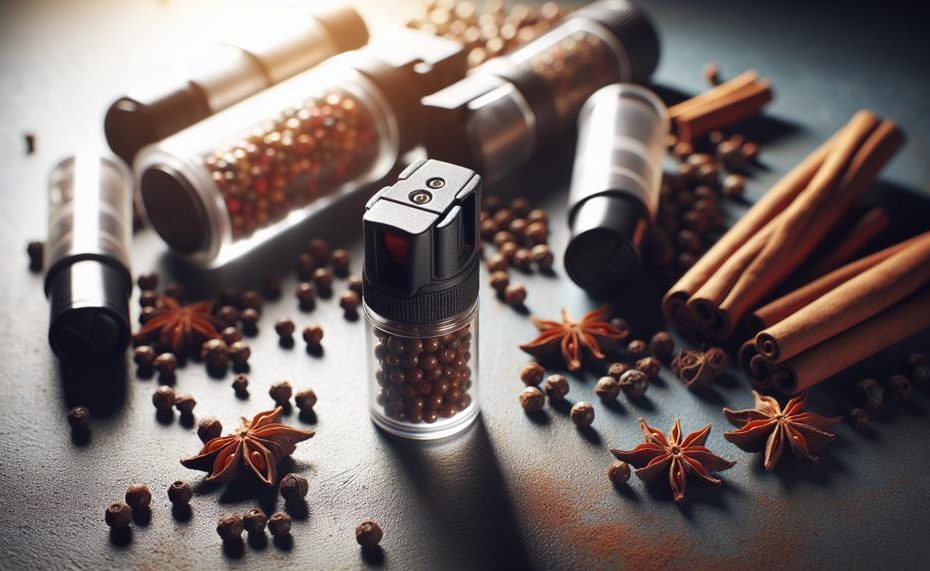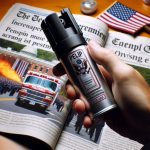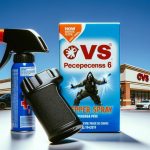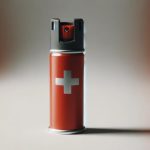Imagine this scenario: you’re walking home from work late at night, the streets are deserted and your senses are on high alert. Suddenly, you hear footsteps behind you, getting closer and closer.
Your heart starts racing as you quicken your pace, but the person behind you is gaining ground. In a panic, you reach into your bag and grab your trusty pepper spray, ready to defend yourself.
But in that moment of fear and adrenaline, have you ever stopped to wonder if that pepper spray is actually safe to use? Can it harm not just your attacker, but also yourself?
Let’s delve into the topic of pepper spray edibility in this blog post.
In this post, we’ll cover some key points such as:
- The main ingredient in pepper spray is an extract from hot peppers called oleoresin capsicum (OC).
- It can cause temporary blindness, difficulty breathing, and intense burning sensations on the skin.
- While it’s intended for self-defense purposes, accidental ingestion or misuse can lead to serious health complications.
- The concentration of OC varies among different brands and types of pepper spray.
- There are specific guidelines for using pepper spray safely and effectively.
So, before you add pepper spray to your list of self-defense tools, let’s take a deep dive into its edibility and find out if it’s truly a safe option.
Contents
Understanding Pepper Spray
Pepper spray is composed of several key ingredients: capsaicin, a propellant (usually nitrogen or carbon dioxide), water, and oleoresin capsicum. Some brands may also include additional chemicals like UV dye or tear gas.
Together, these elements work in tandem to produce the intense burning sensation and temporary blindness that effectively disables the target upon contact with the skin.
However, it’s important to note that if pepper spray is ingested, it can have severe and harmful effects. Ingestion can lead to extreme discomfort, difficulties breathing, and even temporary blindness.
As such, it’s crucial to handle pepper spray with caution and never consume it unless absolutely necessary. In the event of accidental ingestion, immediate medical attention should be sought.
Understanding Pepper Spray:
When it comes to self-defense, pepper spray has become a popular choice for many individuals. The active ingredient in pepper spray is capsaicin, which is derived from chili peppers. This chemical compound has been proven to be highly effective in causing pain and inflammation when in contact with skin or mucus membranes.
However, it’s worth noting that not all pepper sprays are created equal. While some may contain only capsaicin and a propellant, others may have additional chemicals like tear gas or CS gas. These added elements can increase the potency of the spray and cause more intense effects on the target.
The use of pepper spray should always be a last resort in situations where physical harm may be imminent. It’s important to familiarize oneself with proper handling techniques and always carry pepper spray responsibly.
The Components of Pepper Spray
| The Components of Pepper Spray | |
|---|---|
| Pepper spray is a popular self-defense tool that can incapacitate an attacker and provide valuable time for the victim to seek help or escape. The main chemical components of pepper spray are capsaicinoids, propylene glycol, and water. | |
| Capsaicinoids | Capsaicinoids are the active ingredients in pepper spray, responsible for its notorious effects such as intense pain, inflammation, and temporary loss of vision. Derived from chili plants, these chemicals are what make pepper spray such a potent defense tool. |
| Propylene Glycol | Propylene glycol is another key component of pepper spray. It acts as a dispersant for the capsaicinoids, ensuring they are evenly distributed throughout the spray. This helps to maximize the effectiveness and potency of the spray. |
| Water | Finally, water serves as a carrier for the capsaicinoids and propylene glycol. It helps to deliver the chemicals effectively and ensure they are evenly dispersed. Without water, the other components would not be as effective in creating the intense burning sensation that pepper spray is known for. |
Is Pepper Spray Safe to Ingest?
The act of ingesting pepper spray comes with a myriad of potential risks and dangers, as it is not intended for consumption. Some of the most common risks include:
- Intense burning sensations in the mouth, throat, and stomach
- Difficulty breathing and persistent coughing
- Temporary loss of vision and disorientation
- Irritation, blisters, and burns on the skin
- Cyanosis (a bluish tint to the skin due to lack of oxygen)
- Aggravation of pre-existing lung conditions such as asthma or COPD
- Hypothermia (dangerously low body temperature)
- Laryngospasm (the inability to speak or breathe)
- Death, especially for those with asthma
It should be noted that ingesting pepper spray can affect individuals differently depending on their overall health and any pre-existing conditions. For instance, someone with asthma may experience more severe respiratory effects compared to a healthy individual.
Moreover, ingesting pepper spray can be especially hazardous for children, pregnant women, and the elderly. These groups may be more vulnerable to its effects and should avoid consuming it at all costs.
The amount and potency of the pepper spray consumed can have a significant impact on the severity of its effects. Ingesting a large amount or a highly concentrated form of pepper spray can have more serious consequences.
What Happens If You Eat Pepper Spray
The consumption of pepper spray can result in severe and immediate effects on the body due to its inflammatory properties.
When ingested, this spray can cause intense burning sensations in the mouth, throat, and stomach, similar to the effects experienced when sprayed with pepper spray as a form of self-defense.
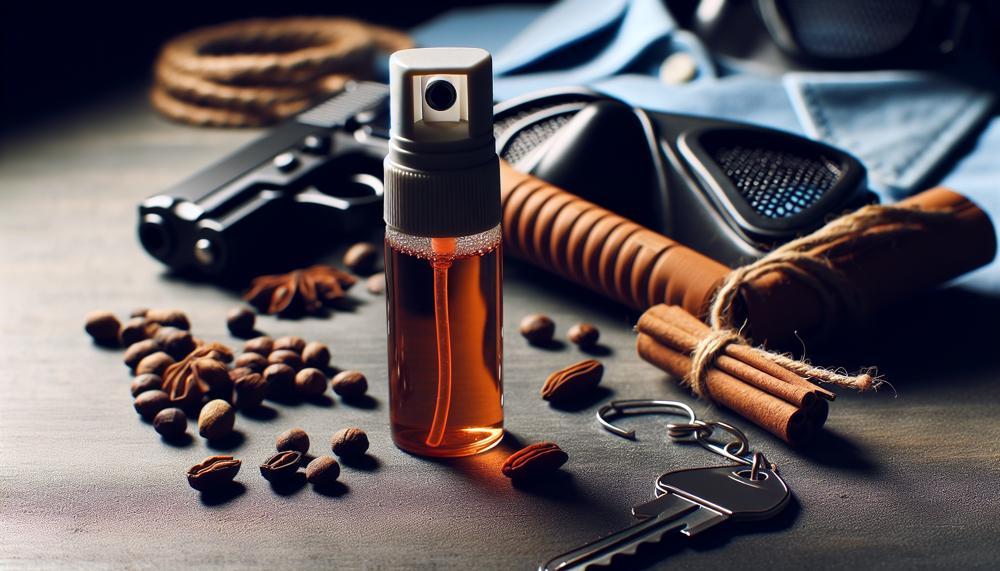
| The Effects on the Eyes | The Effects on the Respiratory System | The Effects on the Digestive System |
| The capsaicin in pepper spray causes intense burning and swelling in the eyes, resulting in temporary blindness and difficulty seeing. | Ingesting pepper spray can lead to difficulty breathing, coughing, gagging, chest pain, and even panic attacks due to the inflammation it causes in the respiratory system. | Consumption of pepper spray can result in intense burning sensations in the mouth, throat, and stomach, leading to feelings of nausea, vomiting, and diarrhea. |
| The Long-Term Effects | Interactions with Drugs or Alcohol | Pre-Existing Conditions |
| Ingesting large amounts of pepper spray can cause long-term damage to the eyes and respiratory system. | Pepper spray can be especially dangerous when consumed by individuals under the influence of drugs or alcohol as it can worsen its effects and lead to more severe consequences. | Individuals with pre-existing conditions such as asthma or heart problems may experience heightened sensitivity to consuming pepper spray. |
What to Do If You Accidentally Ingest Pepper Spray?
If you unintentionally consume pepper spray, there are several essential steps you must take to reduce discomfort and potential harm. These steps include moving to a well-ventilated area, avoiding rubbing your eyes, rinsing them with water, and seeking medical assistance if needed.
It is vital to remember that pepper spray is not meant for consumption and can cause significant damage if ingested.
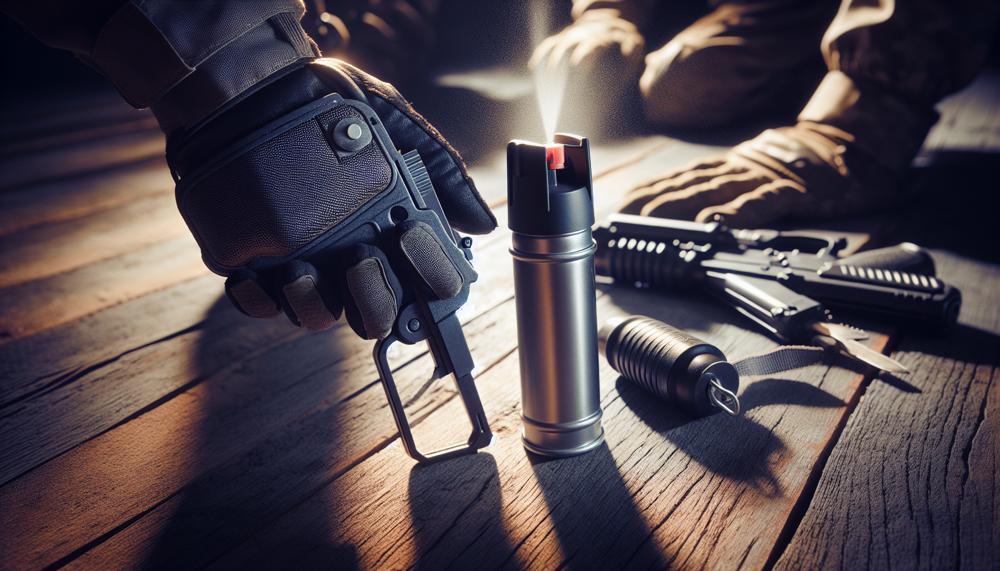
| Step | Action | Details |
| 1 | Find a well-ventilated area | This will decrease the concentration of the irritant and allow for easier breathing. |
| 2 | Keep your eyes open and blink frequently | This will help flush out the irritant and prevent further irritation. |
| 3 | Rinse your eyes with water | Avoid rubbing your eyes and gently rinse them with cool water for a few minutes to alleviate discomfort. |
| 4 | Remove contaminated clothing | Carefully take off any clothing that may have been exposed to the pepper spray to avoid further exposure. |
| 5 | Use water-based solutions for relief | Avoid using oil-based substances as they can worsen the effects of pepper spray. Instead, opt for cool water or a solution of liquid antacid and water to neutralize the capsaicin. |
| 6 | Seek medical assistance if necessary | If you experience severe symptoms or have pre-existing respiratory conditions, seek medical attention immediately. |
Additional tips for treating exposure to pepper spray include flushing affected areas with cool water, using dairy products or lemon juice to alleviate discomfort, and taking a refreshing shower to cleanse the skin.
It is worth noting that vinegar may not provide relief, and eye drops are not designed for exposure to pepper spray.
Alternative Uses for Pepper Spray
Pepper spray, derived from a chili plant, is not just limited to self-defense. There are numerous alternative uses for this versatile tool. Let’s explore some of them below.
| Alternative Uses for Pepper Spray | Details | Source |
| Protection Against Aggressive Animals | Pepper spray can be an effective means of protection against aggressive animals such as dogs or bears. | https://www.americanhunter.org/articles/2014/6/19/pepper-sprays-useful-uses-for-the-outdoors/ |
| Law Enforcement and Crowd Control | Pepper spray is a commonly used tool by law enforcement for crowd control and subduing suspects. | https://www.pepper-spray-store.com/pages/how-to-use-pepper-spray-effectively |
| Personal Safety | Aside from self-defense, pepper spray can also provide a sense of personal safety when walking alone at night or in potentially dangerous areas. | https://www.sabrered.com/pepper-spray-pepper-gel-faq#Q3 |
| Protection for Vulnerable Individuals | In addition to its use for self-defense, pepper spray can also serve as a form of protection for vulnerable individuals such as the elderly or those with disabilities. | https://www.personaldefensenetwork.com/article/using-pepper-spray-for-self-defense-for-those-with-disabilities/ |
| Animal Repellent | Using pepper spray as an animal repellent can help keep pests away from gardens or outdoor areas. | https://www.backwoodshome.com/pepper-spray-as-animal-repellent/ |
| Emergency Situations | In times of emergency, pepper spray can be used as a distraction or to disorient an attacker, allowing the user to escape and seek help. | https://www.safewise.com/blog/how-to-use-pepper-spray/ |
Pepper spray’s effectiveness as a protection tool is evident in its various uses. However, it’s important to note that some animals may not be affected by pepper spray due to their thick fur or high pain tolerance.
Additionally, its usage in law enforcement and crowd control situations is strictly regulated and must comply with legal guidelines.
Conclusion
In conclusion, pepper spray is a potent tool for self-defense, capable of disabling an attacker and providing crucial time to seek help or escape. However, its primary ingredient, oleoresin capsicum (OC), can also cause excruciating burning sensations and temporary blindness if accidentally ingested.
Therefore, it’s crucial to handle pepper spray with utmost caution and only use it as a last resort in dangerous situations.
Moreover, while pepper spray may have alternative uses such as protection against aggressive animals or personal safety when walking alone at night, it should never be consumed or used as a seasoning directly on food. The effects of ingesting pepper spray can be severe and potentially life-threatening.
By understanding the components of pepper spray and following proper guidelines for usage, we can ensure our safety without putting ourselves or others at risk.
It’s essential to remember that while pepper spray can be a valuable tool for self-defense, it should always be used responsibly.
